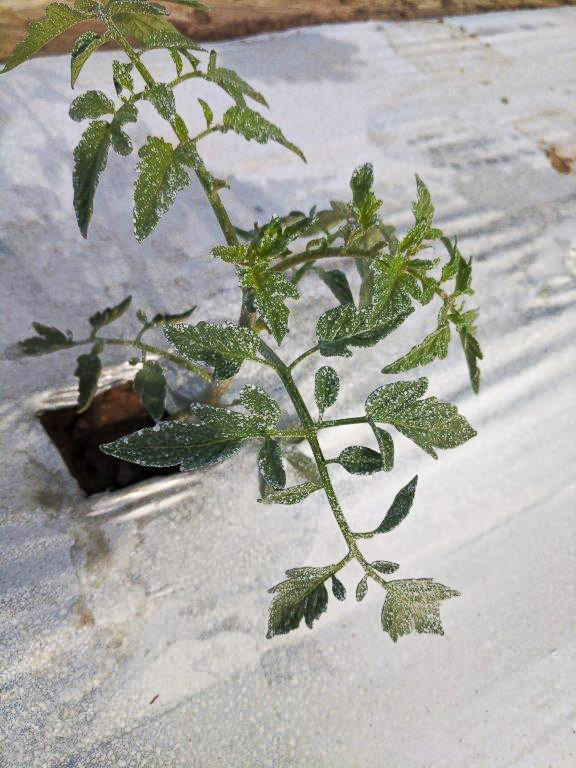QUINCY, Fla. — University of Florida Institute of Food and Agricultural Sciences (UF/IFAS) researchers are helping tomato producers successfully manage whiteflies.
Previous studies helped narrow scientists’ focus to a white clay, kaolin, and an essential oil, limonene. Each is approved by the Environmental Protection Agency for agricultural use.

“These products are easily found and relatively inexpensive, and they can be applied using a tractor that is standard spray equipment on most farms,” said Xavier Martini, an entomologist at the UF/IFAS North Florida Research and Education Center (NFREC) in Quincy. “They also happen to meet the requirements for organic production, so although that was not a specific goal for this study, it is a bonus.”
Joining Martini in the project is Nicholas Johnston, a Ph.D. student in his lab; Mathews Paret, associate professor of plant pathology; Josh Freeman, associate professor of horticultural science; and Thomson Paris, postdoctoral researcher in entomology.
The study was published in the journal Crop Protection. It details applications in both closed-cage plants and open-field test plots, with some plants receiving a single type of treatment and others a combination of the two. While the single treatments resulted in fewer nymphs and adults than non-treated control plants, the combination resulted in the smallest whitefly counts.
“It’s not clear why the whitefly doesn’t like the leaves applied with the clay,” Martini said. “We know whiteflies are attracted to the color yellow, so we initially thought it was a visual repellent. We found that it was more likely the texture of the coating. But when combined with another type of repellent in limonene, we saw the whiteflies were even less drawn to the plant.”
The scientists conducted weekly applications due to plant growth and rainfall.
UF/IFAS research on kaolin-limonene treatments is continuing, Martini said, and will next focus on squash and other cucurbits.
What are Whiteflies?
The whitefly prefers the underside of leaves. It feeds on a variety of plants and spreads a few diseases, including tomato yellow leaf curl virus. Growers apply insecticides weekly to the plants, which may not prevent the disease from reaching and spreading throughout a field, he said.
“The whitefly is able to use other plants as hosts, including surrounding row crops and weeds, which helps it to remain near crop fields even where insecticides are being used,” Martini said.










